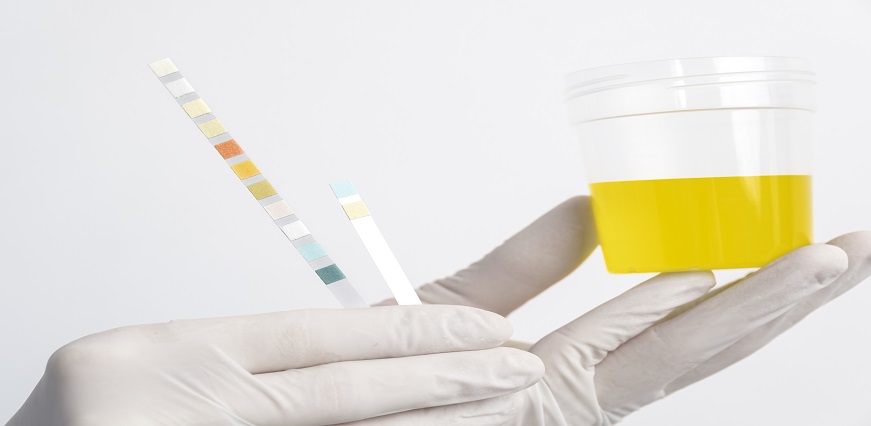Are you curious about what goes on behind the closed doors of a medical laboratory? Well, today we are going to dive into the fascinating world of urine routine and microscopy tests. While it may not sound glamorous, this simple yet powerful test can provide valuable insights into your overall health.
What is a Urine Routine and Microscopy Test?
A urine routine and microscopy test, also known as a urinalysis, is a common diagnostic tool used to assess the health of your urinary system. It involves analyzing a sample of your urine to detect any abnormalities or markers of diseases. This non-invasive and painless test can provide valuable insights into various aspects of your health.
Why is the Urine RM Test Done?
This test can help detect various urinary tract infections such as bladder or kidney infections. By analyzing the presence of bacteria or white blood cells in your urine, doctors can determine if you have an infection and prescribe appropriate treatment.
Additionally, the urine routine and microscopy test helps identify abnormalities in the kidneys. It can detect conditions like kidney stones or inflammation that may be causing symptoms like pain or difficulty urinating.
Moreover, this test plays a crucial role in monitoring chronic conditions such as diabetes or high blood pressure. Changes in glucose levels or protein excretion in the urine can indicate how well these diseases are being managed.
Furthermore, individuals at risk for certain disorders may undergo regular urine tests to screen for early signs. For example, people with a family history of kidney disease may have their urine checked regularly to catch any abnormalities before symptoms develop.
How is the Urine RM Test Done?
You will be given a sterile container in which you need to collect a mid-stream sample of your urine. It's important to ensure that the area around your genitalia is thoroughly cleaned before collecting the specimen.
Once collected, the sample will be sent to a laboratory for analysis. The lab technician will examine various parameters including color, clarity, pH levels, specific gravity, protein levels, glucose levels, and presence of bacteria or other microorganisms.
To conduct the microscopy part of the test, a small portion of the urine sample will be placed under a microscope. This allows for examination of red blood cells (RBCs), white blood cells (WBCs), epithelial cells, crystals, casts if present.
The entire process usually takes just a few minutes and should not cause any discomfort or pain.
What do the Urine RM test Results Mean?
One component of the test examines the physical characteristics of your urine, such as color, clarity, and odor. Abnormalities in these areas may indicate certain health conditions or lifestyle factors. For example, cloudy urine could be a sign of infection or kidney stones while dark-colored urine may suggest dehydration.
Another aspect of the test looks at chemical components in your urine such as pH levels, glucose, protein, ketones, and blood cells. Elevated levels of glucose may indicate diabetes while high protein levels could point to kidney disease.
The microscopic analysis evaluates the presence of bacteria, red blood cells, white blood cells, crystals and other substances that are not visible to the naked eye. These findings can help diagnose urinary tract infections (UTIs), bladder conditions or even certain types of cancers.
It's important to note that abnormal results don't necessarily mean there is a serious medical issue present; they simply signal further investigation is needed by your healthcare provider for accurate diagnosis and appropriate treatment plan if necessary.
When to Follow Up With Your Doctor
After you have undergone a urine routine and microscopy test, it is important to know when you should follow up with your doctor. While the test itself may provide some initial insights into your urinary health, further evaluation and discussion with a healthcare professional are often necessary.
If the results of your urine routine and microscopy test show abnormal findings such as high levels of protein, blood cells, or bacteria in the urine, it is crucial to schedule a follow-up appointment with your doctor. These abnormalities could indicate an underlying condition that requires further investigation and treatment.
Additionally, if you experience persistent symptoms such as frequent urination, pain or burning during urination, cloudy or foul-smelling urine, or any other concerning changes in urinary habits after undergoing the test, it is advisable to seek medical attention promptly.
Conclusion
Taking care of our urinary system is essential for overall well-being. By staying informed about tests like urine routine and microscopy tests and seeking proper medical advice when needed, we can maintain good urinary health for a better quality of life.













 7982100200
7982100200

























 To reach our help desk call 9213188888
To reach our help desk call 9213188888.png)
Comments